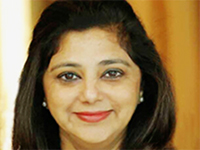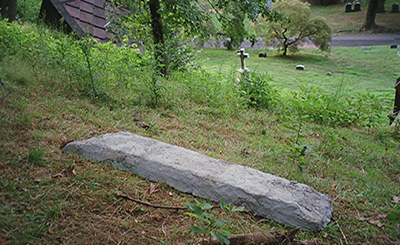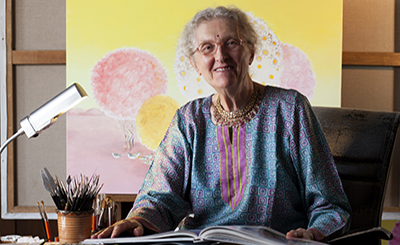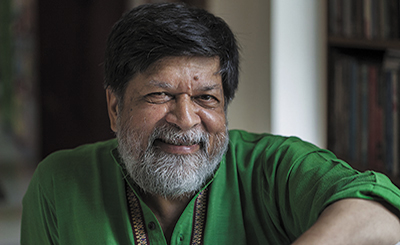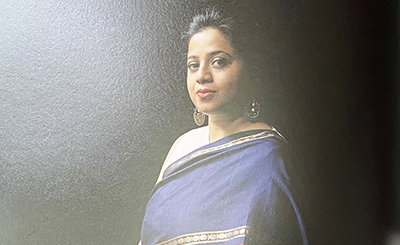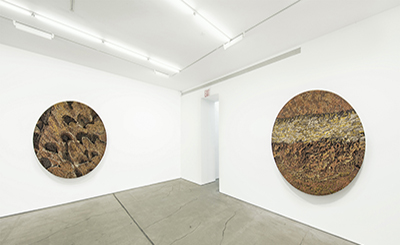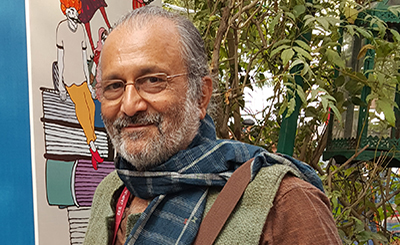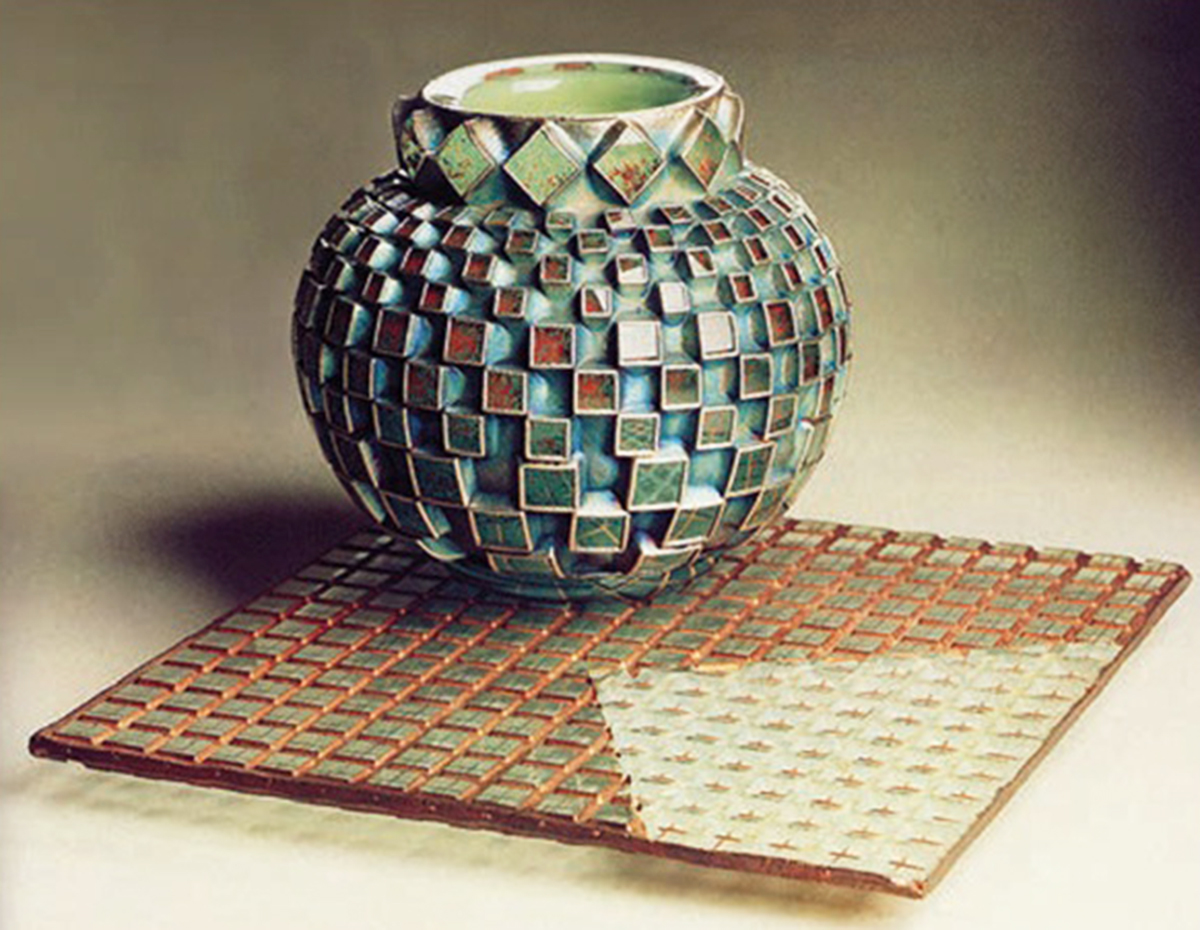
Pie-R-Square, 1980. Glass, silver, copper. H (vase) 4 3/4 inch. H (base) 1, W 8, D 8 inch. Collection: Metropolitan Museum Of Art, New York, Gift: Douglas And Michael Heller
The club, launched by Artspeaks India, will provide glass the space and recognition it deserves by enabling artists, practitioners, writers, connoisseurs and collectors to explore the medium in different ways
A childhood obsession, glass as an art form has always been a medium very close to my heart. It all began when I was eight years old on those long, lazy summer visits to the Mumbai I always knew as Bombay. A chance detour to the St Thomas Cathedral in Fort, the heart of Mumbai’s busy business district, paved the way for a lifelong appreciation of stained glass. The collection, which comprised historically and artistically very significant stained glass, included the very first windows from the studio of the renowned Charles E. Kempe, as well as stained glass designed by one of the most highly respected glass painters of the nineteenth century, Henry Holiday. In the mid-nineteenth century, ships carried stained glass from England in long, hazardous voyages, destined for several locations in India. It graced palaces in Southern and Western states, it adorned churches and cathedrals in Delhi, Calcutta, Madras and Bombay, and made its way by bullock cart to remote settings such as the tiny churches at Shillong, Chittagong and Roorkee.
Later, as I moved into my teens, the influences and exposure were less historic, more modern and, more recently, by contemporary art glass makers. Encouraged by multiple visits to museums with the parents and friends from the art fraternity, I explored museums like Chihuly Garden and Glass in Seattle (Washington), Corning Museum of Glass (Corning, New York), Charles Hosmer Morse Museum of American Art (Winter Park, Florida) and Wheaton Arts and Cultural centre (New Jersey), and Tate Modern and Victoria and Albert Museum in London. Contemporary glass art museums and glass art studios introduced me to prominent glassblowing artists whom I have been following closely ever since. They include Dale Chihuly, Marvin Lipofsky and William Morris.
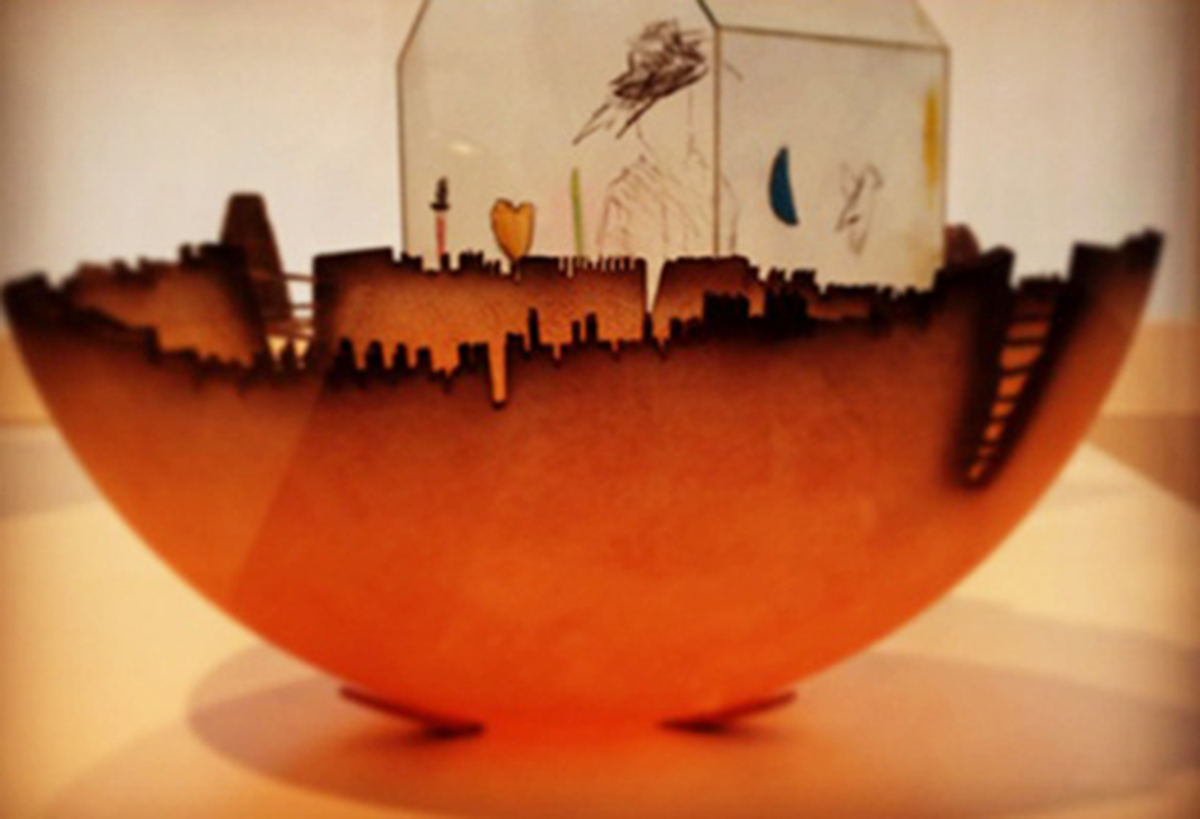
Cityscape by Jay Musler (American, 1949), from the Urban Bowl Series, 1982, carved and blown glass, collection Los Angeles County Museum of Art. Photo courtesy of the museum.
Cityscape by Jay Musler (American, 1949) remains etched in memory from the Urban Bowl Series, 1982, carved and blown glass, collection Los Angeles County Museum of Art.
Of late, I have been now closely following the enduring works of Michael Glancy (1950-2020), especially after first seeing his work a decade ago at the Metropolitan Museum of Art, New York. Glancy’s recent works continue to mesemserise me, with his elaborate cutting and electroforming process that created objects of exquisite complexity. The Contemporary Art Glass world deeply mourns his passing.
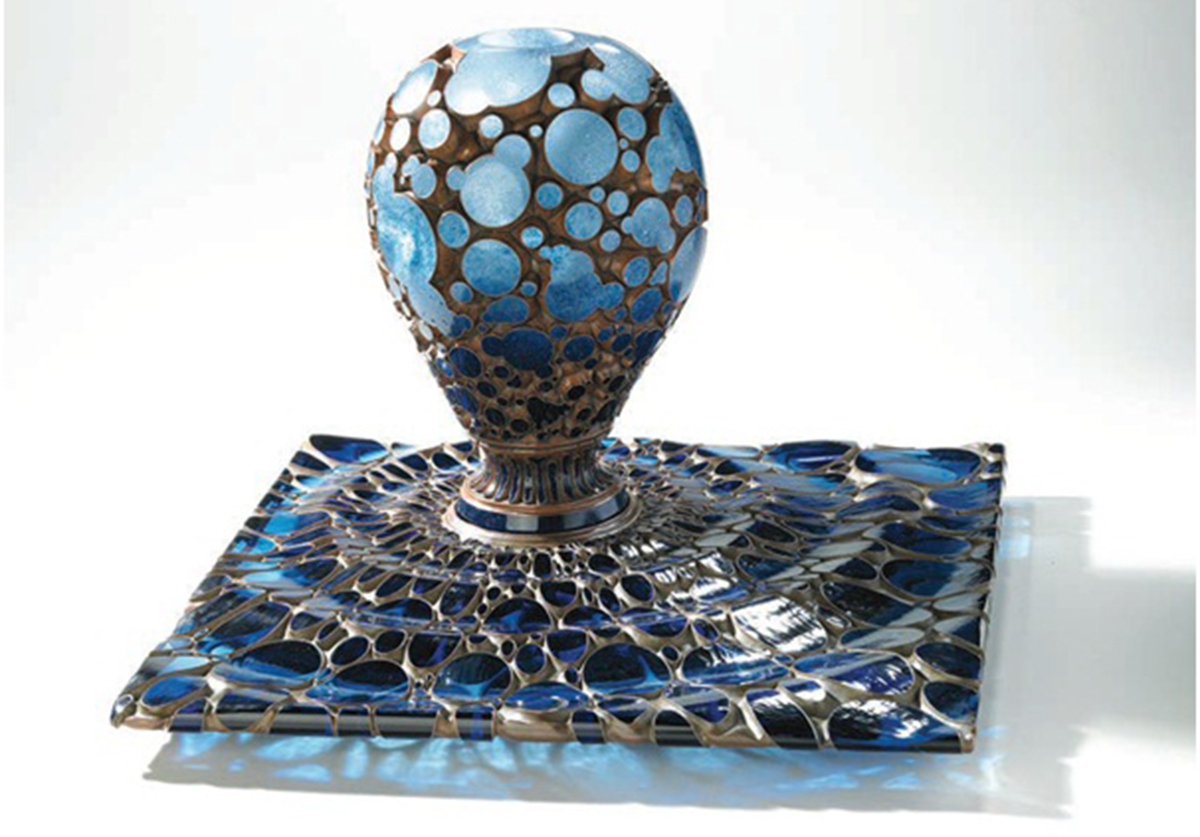
Elliptical Witness, 2017. Pâte de verre cast-glass object, dual-sided Brazilian plate glass, deeply engraved “Zig-Zag cut, patinaed copper and silver. H 13, W 18 1/4, D 18 1/4. Courtesy: Heller Gallery
Closer home in India, it must surely be providence which has had me inadvertently working very closely with glass for the last fifteen years when I met glass sculptor Hemi Bawa and eventually began presenting her works in several exhibitions and commissions, including hotels, airports, museums and public art festivals. My appreciation of Sisir Sahana’s cast glass sculptures has also been immense. The forms , colours and precisions of his sculptures have always mesmerised me and I spent a good many years engaging with them. Anjali Srinivasan intrigues and inspires with her background in creative practice which stems from collaborations with traditional glass artisans in India since 1998, on research and design initiatives aimed at socio-economic empowerment. She lives and works between India and the United States, as Assistant Professor at Massachusetts College of Art and Design, Boston, and Director at ChoChoMa Studios, Bangalore. Her artistic research is invested in notions of “biological craftsmanship” and “crowd-created” entities, and pedagogical efforts seek to overthrow various implicit biases that lie within glassmaking practices.
Her studio processes focus on developing ways to discover, access and restructure information held in a material. She makes self-eroding objects that remain unfulfilled and incomplete without human intervention. Her studio promotes socially responsible glass design and studies how material imagination speaks to creative empowerment in a sustainable manner.
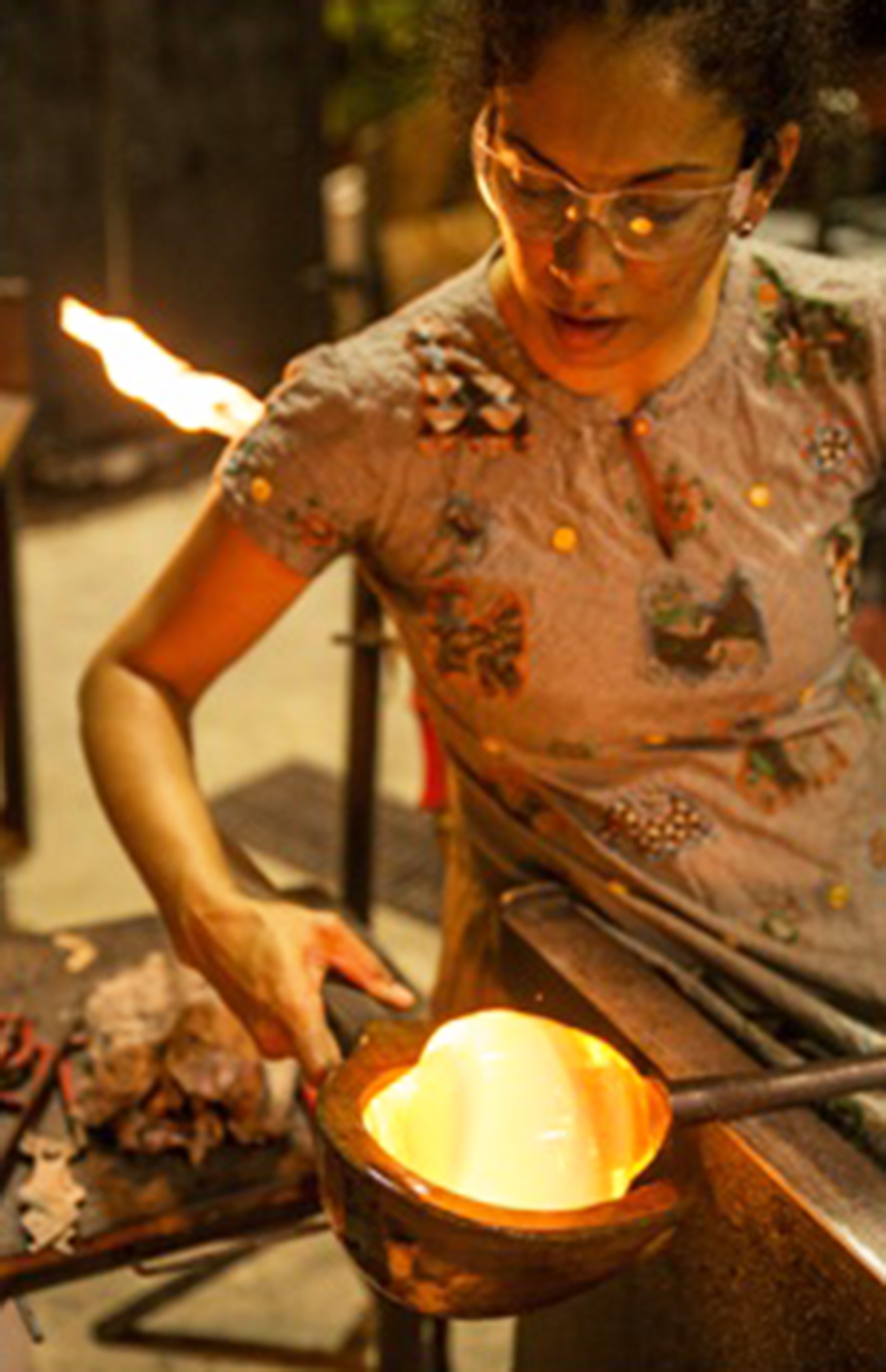
US-based educator and artist Anjali Srinivasan at work.
As a result of this, a deep engagement with collecting and appreciating art glass has emerged, coupled with a curiosity to probe further into the intricacies of glass in studio practice — the nuances, the successes, the trials and tribulations. Glass is a fragile medium yet tactile and strong and an object of extraordinary beauty. I also discovered that glass makers in the art realm in India were often working in isolation and that a forum would not only inspire the community at large but also be a hub for glass makers to introduce, further the knowledge, create awareness and explore the commerce of glass as an art form and collectible and present that to curators and collectors.
It is with great excitement that I share my key role in the launch of India’s first-ever Glass Makers’ Club, launched by Artspeaks India, an entity I founded more than a decade ago. The Club is envisaged to be a platform and forum that is directed towards the medium of glass and its multiple avatars. At the core of the club’s agenda will be to provide glass the space and recognition it deserves; to bring together artists, practitioners, writers, connoisseurs and collectors exploring the medium in different ways; and to collectively address the infrastructural and other challenges that makers of glass continue to face. Though a niche field of practice, glass art in India is connected to a rich legacy of historical trade and courtly patronage, building community artisanship and crafting skills of a very high standard, particularly in blown glass techniques. Glass has made its presence felt in the space of contemporary art and design as well, with a few individuals and studios leading the way.
The inaugural panel discussion of The Glass Makers’ Club coincided with the opening of ‘Bodies of Light’ — Padma Shri awardee, artist and sculptor Hemi Bawa’s solo exhibition, presented virtually. The discussion brought about, for the first time, a public discussion on contemporary glass art. The participating artists shared their personal journeys and fascination for the medium as well as the challenges and perks that are associated with working with the material. The discussion highlighted relevant practical and conceptual concerns of the artists. Sisir Sahana, sculptor and professor, spoke about the science and alchemical interactions that go into experimenting with glass, and how as an artist, understanding the process of making and creating often overrides the particularity of a medium. Hemi Bawa described the inherent possibilities of cast glass and articulated the infrastructural needs and requirements, that cause the medium to be not chosen by many. Anjali Srinivasan, artist and educator from Massachusetts, raised important considerations of resources, raw materials and artists’ responsibilities towards climate change awareness and ethical work processes. Other parts of the panel opened up thoughts on collaboration, the function of local artisans, quality of materials and the art market.
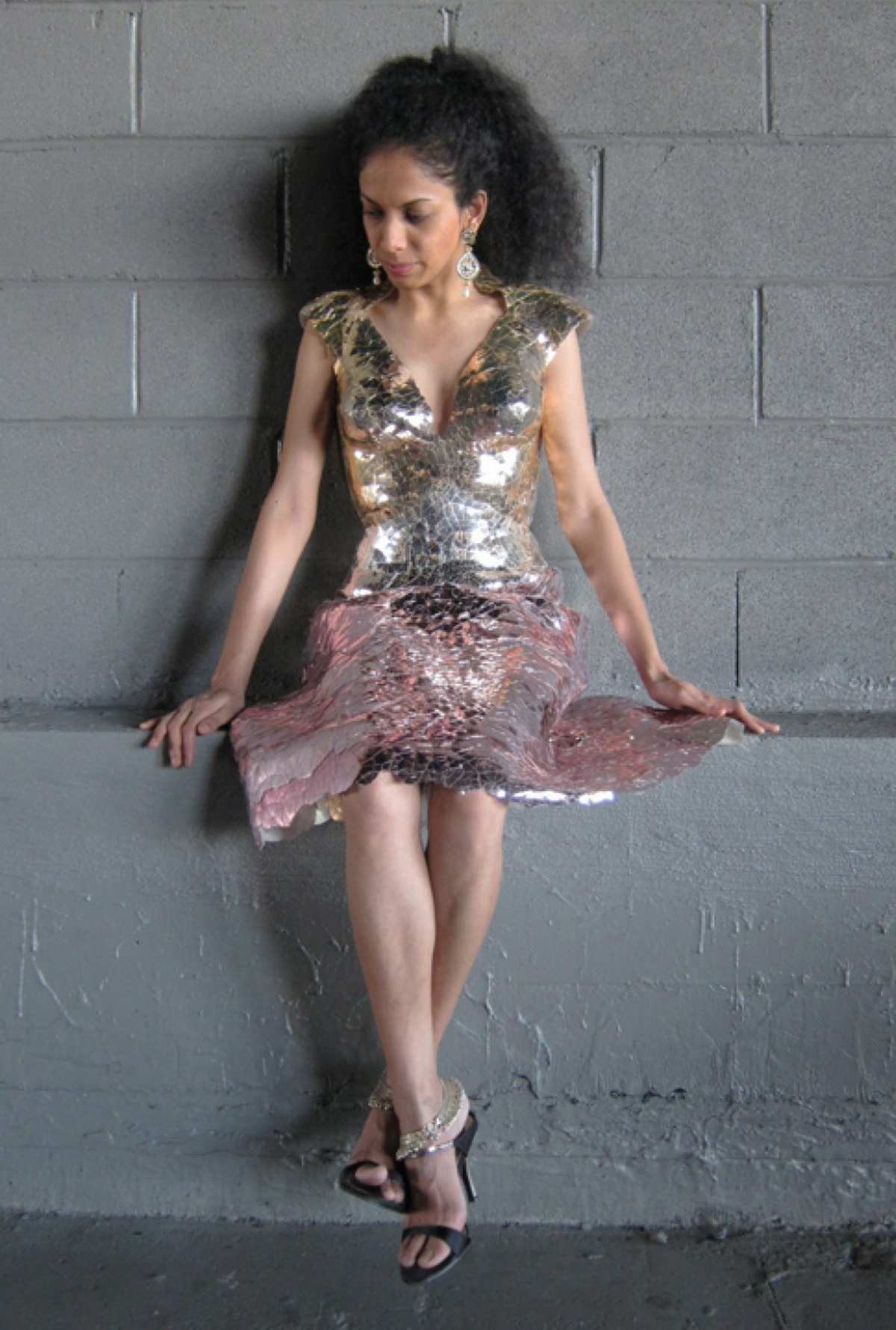
Pink peach glass dress. Photo by Alana Quinn, 2010.
In building a forum with a focus on glass art, Artspeaks India seeks to initiate an international network of professionals and interested members, who can share their expertise and participate in an evolving discourse through discussions, workshops, studio visits, publications, exhibitions and other activities. The Club will work towards popularising the medium, reaching out to support practitioners and attempt to bridge the gaps that exist in material availability, technical collaboration and studio facilities. It will initiate the development of focused residencies and showcases that will not only ensure representation of South Asian artists but also build interfaces for international dialogue and foster global creative exchange. The club aims to provide accessible information and gather data on artists, galleries, museums, educators, vendors, conservators, cultural institutions, government organisations and others that are connected by a common engagement with glass.
This will open up accessibility for collectors and aficionados of glass art, design and craft. Step by step, the club hopes to initiate a bi-monthly talk and panel series that will integrate local, national and international peers on the basis of the exploration of glass.
Glass is a medium that is as magical as it is unforgiving. With its initiation in early Egyptian and Mesopotamian civilisations, the medium has come far as an irreplaceable structural element in architecture, design, and household accessorising, as well as in art. Glass comes from an organic silica base, and is recyclable and durable. It is termed as amorphous solid — a state between solid and liquid. There are many fascinating structural and physical aspects of glass that offer tremendous possibilities in the creative world. The Glass Makers’ Club will direct its programming towards engaging in a multi-layered way with the medium, in order to promote, educate, and develop accessibility for it and encourage its resonance in a greater way with its makers and admirers.
Comments
*Comments will be moderated



